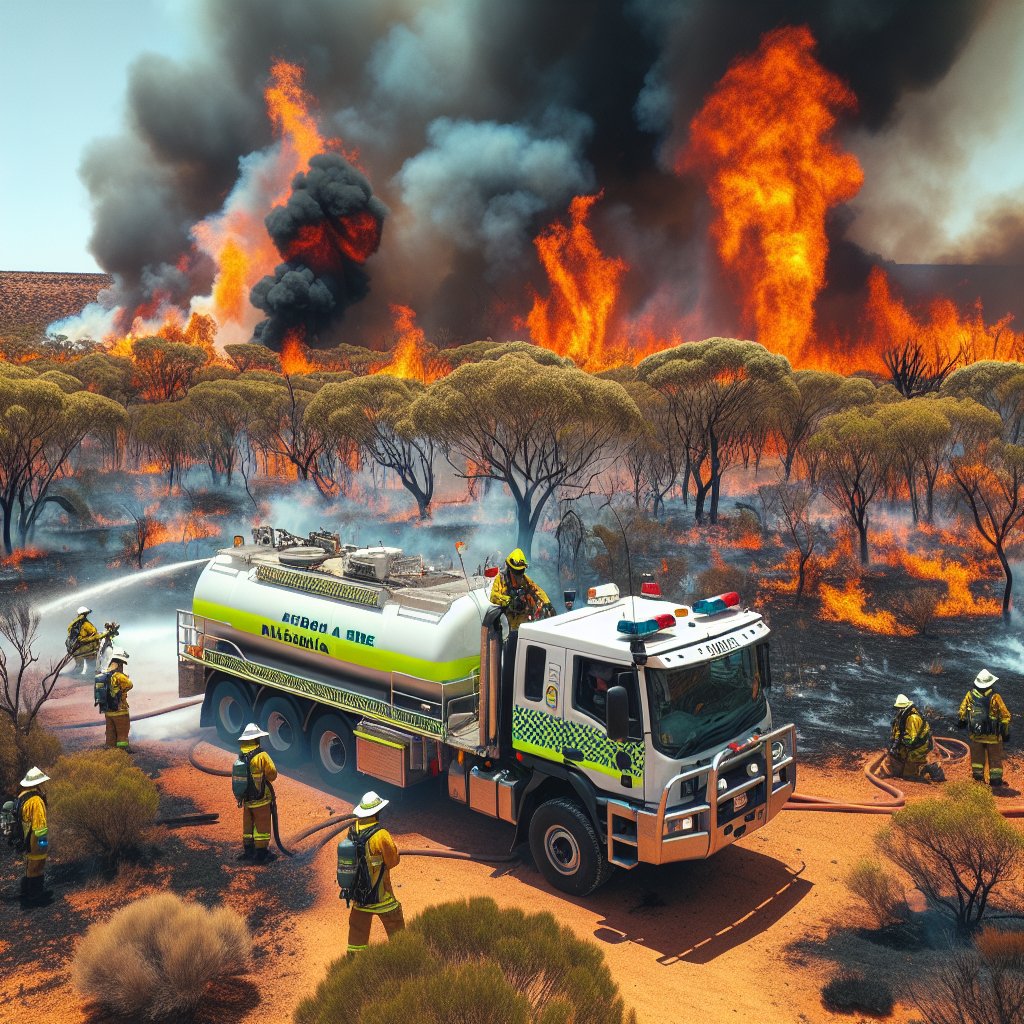The Pilbara region in Western Australia is currently grappling with an intense and uncontrolled bushfire crisis. Known for its rugged landscapes and high temperatures, the Pilbara is no stranger to wildfires. However, in recent weeks, the situation has become increasingly severe, leaving authorities racing against time to protect the land, wildlife, and local communities from devastation.
To combat these raging fires, significant resources have been deployed, including a specialized **light fire tanker** equipped to handle frontline firefighting. This report delves into the situation on the ground and the critical role of this lightweight yet powerful firefighting equipment in combating the crisis.
The Escalation of the Bushfire Emergency
The climate in Pilbara is characterized by extreme heat and sporadic rainfall, creating conditions that make the environment highly susceptible to bushfires. Recent weeks have seen a series of uncontrolled fires spreading swiftly through arid grasslands and scrub. According to local authorities:
- The strength of the winds has exacerbated the spread of flames.
- The vegetation, dried out from prolonged heat, has provided ample fuel for the fire.
- Emergency services have been stretched thin, battling multiple blazes simultaneously.
The Pilbara region’s isolation further complicates the response, as firefighters face logistical challenges in reaching remote fire fronts. These conditions have led to increased reliance on specialized equipment like light tankers to suppress the flames effectively.
What Is a Light Tanker, and Why Is It Critical?
A **light tanker** is a compact, maneuverable firefighting vehicle designed specifically for managing bushfires, particularly in rugged terrain where larger trucks and equipment might struggle. These vehicles are equipped with:
- A durable water tank capable of carrying thousands of liters of water.
- High-pressure pumps and hoses designed to target fires with precision.
- Four-wheel drive to navigate uneven and hazardous terrain.
Unlike heavy firefighting vehicles that often require smooth roads, light tankers can reach the heart of remote bushfire zones. Their nimble nature enables quick responses in areas inaccessible by traditional firefighting tools, making them indispensable in the fight against wildfires.
Advantages of Light Tankers in Firefighting
Light tankers provide several key advantages, which are particularly useful in regions like Pilbara:
- Enhanced maneuverability to navigate through rocky and uneven terrain.
- Rapid deployment for immediate suppression in fast-spreading fires.
- Cost-effectiveness compared to larger, more resource-intensive firefighting vehicles.
- Ability to complement other firefighting resources, including aerial water bombers, to tackle fires from multiple angles.
In the current Pilbara bushfire crisis, light tankers are serving as a frontline resource, allowing firefighters to get closer to the flames and prevent further spread.
Collaborative Efforts to Control the Blazes
The deployment of light tankers is part of a broader firefighting strategy that includes collaboration between local, state, and federal emergency services. Authorities have also enlisted the help of:
- Aerial support, including helicopters and water bombers, to douse flames in hard-to-reach areas.
- Volunteer firefighters from nearby regions to reinforce overstretched crews.
- Community awareness campaigns urging residents to evacuate or take precautions as needed.
Emergency services have emphasized the importance of a multi-tiered approach to addressing the crisis. This includes protecting populated areas, such as towns and villages in Pilbara, as well as safeguarding mining operations, which are critical to the region’s economy.
Impact of the Bushfires
The bushfires are having a significant impact on various aspects of life in Pilbara, including:
- Environmental damage: Thousands of hectares of land have been scorched, leading to the loss of native flora and fauna.
- Community displacement: Many residents have been forced to leave their homes due to advancing fire lines.
- Economic concerns: Key industries in the region, particularly mining, have had to pause operations due to safety precautions.
While the full extent of the damage is yet to be assessed, it is clear that the fires are leaving a lasting scar on the region.
Wildlife and Ecosystem at Risk
Beyond the immediate threat to human life and property, these fires are also causing irreparable harm to the Pilbara’s unique biodiversity. Native wildlife such as kangaroos, dingoes, and myriad bird species face displacement or death from the flames, while ecosystems are being pushed to their limits. Emergency services are working tirelessly to minimize these impacts, including measures to ensure wildlife corridors remain accessible.
Preventing Future Bushfire Emergencies
While light tankers and other firefighting equipment play a pivotal role in responding to the crisis, experts underscore the need for proactive measures to prevent such emergencies in the future. These include:
- Regular controlled burns to reduce the amount of combustible material in vulnerable areas.
- Improved infrastructure for early detection and quick responses to fire outbreaks.
- Community education programs to raise awareness about fire safety and prevention techniques.
- Enhanced funding and support for emergency services in remote regions like Pilbara.
The current bushfire emergency serves as a stark reminder of the ongoing threat posed by climate change and extreme weather events. Moving forward, a collaborative approach will be needed to mitigate risks and protect both human lives and the environment.
Final Thoughts
The deployment of **light tankers** to the Pilbara bushfire crisis highlights the importance of having specialized tools and strategies in place to combat natural disasters. These nimble vehicles, when combined with aerial surveillance and a dedicated firefighting workforce, play an invaluable role in stabilizing an otherwise dire situation.
As the fires continue to rage, the resilience of the Pilbara community and the tenacity of emergency responders shine through. Their efforts, along with lessons learned from this crisis, will surely pave the way toward better preparation and response strategies in the future.
Stay tuned for updates on the Pilbara bushfires and share this article to raise awareness about the importance of frontline firefighting efforts.
“`


